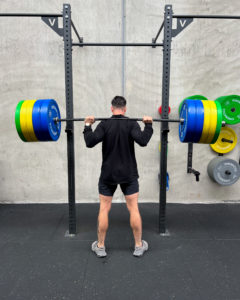The importance of strength training following injury
April 6thInjuries can be incredibly diverse in their nature, intensity and impact both physically and emotionally. They can range from causing havoc on everyday activities such as putting on your socks, or impacting your 5km running time.
In the majority of cases, we’re told to rest to help the injury settle down. But how can you rest from putting on your socks? What if you rely heavily on exercise to help manage your stress and the thought of not training is so scary that it keeps you pushing through injury?
Rest can be useful at times. Certainly with boney type injuries where we need to completely deload to help the area recover.
However, in most cases, pain is created because the brain perceives a threat and therefore creates a painful response in the area to force you to offload it. This doesn’t necessarily mean there is any structural trauma. Sometimes the brain creates false alarms and as a result we need to find strategies in which we can load the area, and let the brain know there is no threat.
A particularly effective strategy is to look at the amount of load you put through the area. A painful back may have occurred due to lifting more things from the floor than normal = increased load. A runners painful achilles may have occurred due to increasing the speed in their run too quickly = increased load.
The key here is finding a balance between load and recovery. If the pendulum swings in favour of recovery, we are less likely to pick up these injuries. A lack of recovery (poor sleep, overload in training, increased stress etc) and increased load, can create this painful response from the brain resulting in injury.
Once we have found this balance between load and recovery (reduced stress to the lower back by sitting less and moving more or a reduction in running volume) we should see symptoms either plateau or reduce.
This is now the right time to expose this area to controlled load through strength training. If we can now improve the capacity of the area to accept and express load in a controlled setting, then we can improve the amount of load this area of the body can tolerate before there is a possible painful response from the brain. For example, if we can now slowly build up the strength of the lower back when picking items up from the floor, the back is going to be able to manage this load with greater ease, reducing the chances of the brain seeing this as a threat and causing a pain response.
This exposure to load strategy is why we strength train, especially following injury. The body reacts incredibly well to physical stress, so long as this is followed by adequate recovery. Strength training will help reduce your chances of an injury reoccurrence and therefore is paramount to include in your recovery strategy.

Our holistic, team-oriented approach at Kinematics puts this theory into practice. Once you’ve seen one of our osteopaths or physiotherapists for injury diagnosis and any required hands-on treatments, you will then be guided safely through an individualised rehabilitation pathway.
Our team of strength + conditioning coaches work closely with our therapists to design a rehabilitation program that is unique to you. The program will be delivered in either a 1:1 or a small 1:4 group class setting and will target key areas that need to be loaded for you to recover fully and excel.
We believe this end-to-end approach by our team at Kinematics provides the most effective and long-lasting outcomes for our clients. If you’re currently injured or know of a previous injury you haven’t rehabilitated fully – come in and see one of the K team to help get you back on track!
By Craig Hardigham
Sports Therapist | Strength + Conditioning Coach
Kinematics Strength + Recovery
Book an appointment here.
